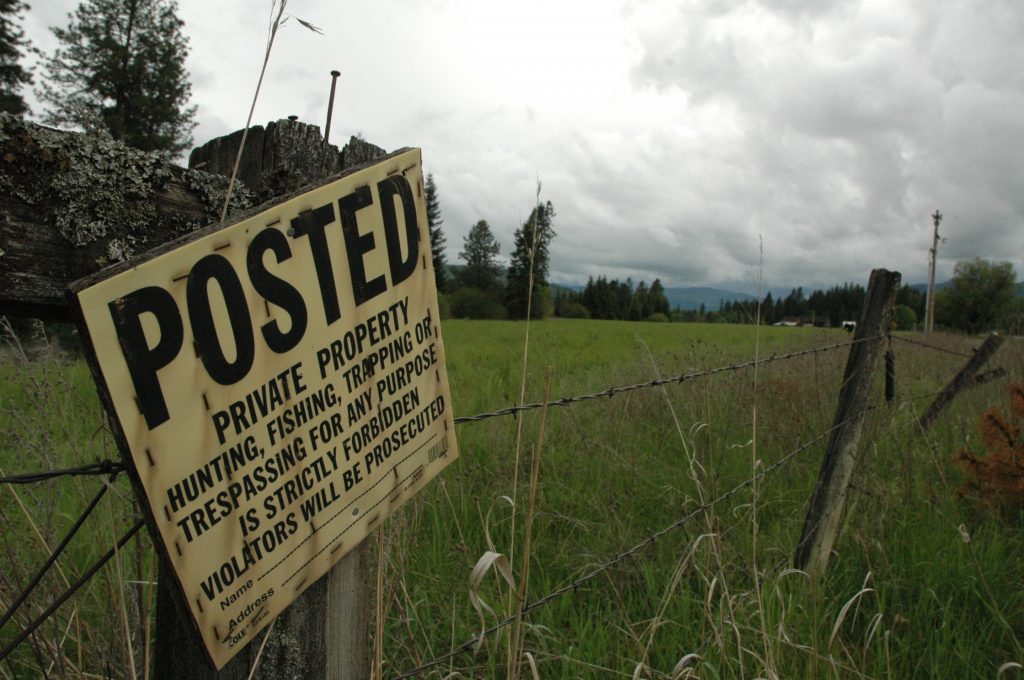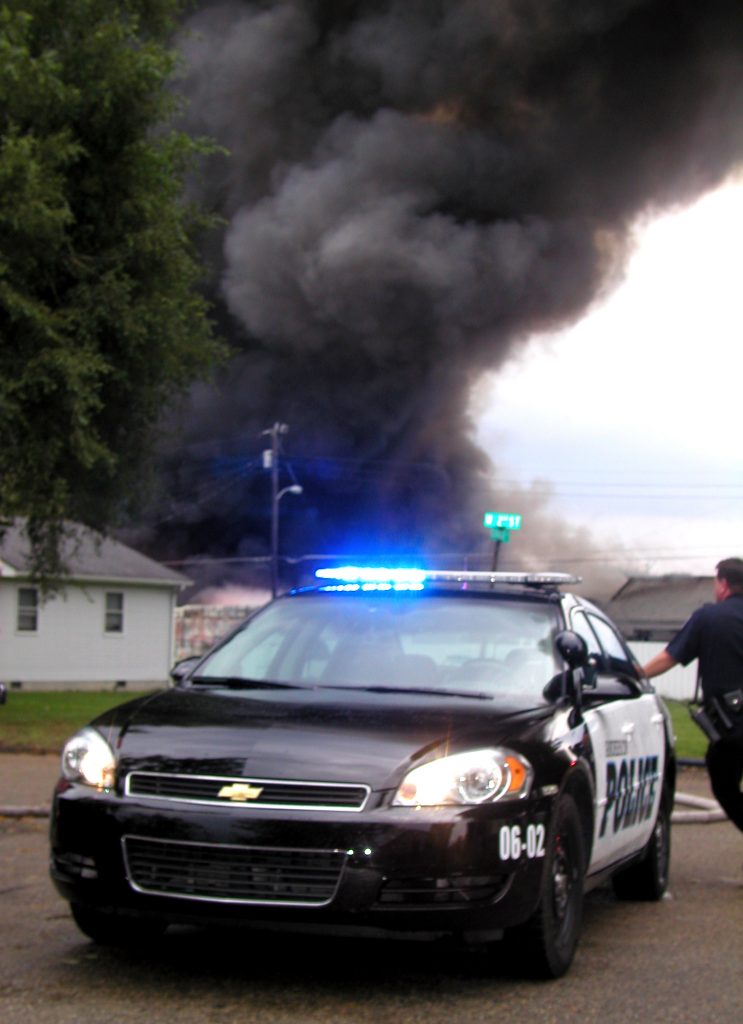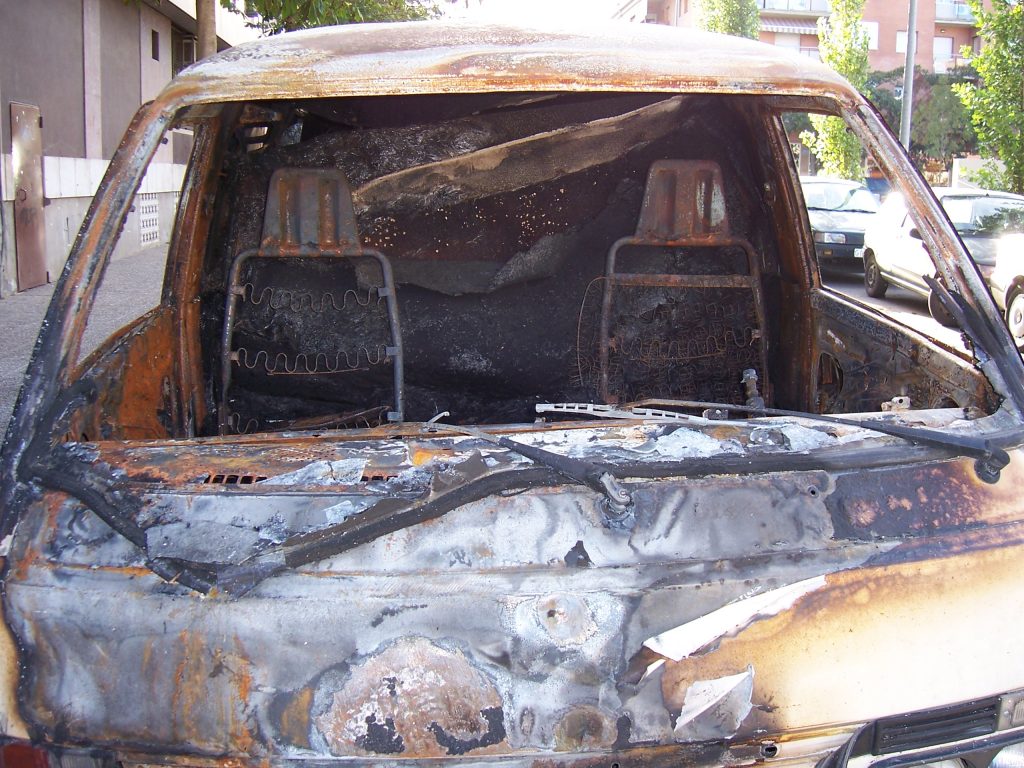 Property disputes can be complicated and confusing, so it is important to hire an excellent lawyer capable of untangling all of the issues involved in the case. Plaintiff Don Whitlock owns property in East Carroll Parish, Louisiana and brought a petition against Defendant Fifth Louisiana District Levee Board and its lessee, Jamie Isaac, seeking a preliminary and permanent injunction to prevent the defendants from trespassing on his property when they travelled across to access a hunting lease owned by the defendant Levee Board that is located west of Plaintiff’s property. Mr. Whitlock farms on the three lots of land at issue and alleged Issac caused damage as he crossed all three lots, creating ruts in the soil, damaging crops, and changing the flow of water. The defendants, however, argued that the land was conveyed to plaintiff’s ancestor with a public right of passage in the deed, and thus there could be no suit for trespass. The Trial Court agreed and with the defendants and held that there was no cause of action. It also held that since Mr. Whitlock was not the sole owner of the land (there were other owners on two of the three lots), he failed to join all the parties and further lacked the capacity to sue in a representative capacity for the other owners. Finally, it took a “strange” step in ruling on the merits of the preliminary injunctions despite the fact that it had sustained the exceptions raised by the defendants. It held that preliminary injunction could not be granted because Mr. Whitlock failed to show irreparable harm. Thus, the Trial Court dismissed the case. On appeal, Mr. Whitlock argued that the Trial Court’s rulings were improper.
Property disputes can be complicated and confusing, so it is important to hire an excellent lawyer capable of untangling all of the issues involved in the case. Plaintiff Don Whitlock owns property in East Carroll Parish, Louisiana and brought a petition against Defendant Fifth Louisiana District Levee Board and its lessee, Jamie Isaac, seeking a preliminary and permanent injunction to prevent the defendants from trespassing on his property when they travelled across to access a hunting lease owned by the defendant Levee Board that is located west of Plaintiff’s property. Mr. Whitlock farms on the three lots of land at issue and alleged Issac caused damage as he crossed all three lots, creating ruts in the soil, damaging crops, and changing the flow of water. The defendants, however, argued that the land was conveyed to plaintiff’s ancestor with a public right of passage in the deed, and thus there could be no suit for trespass. The Trial Court agreed and with the defendants and held that there was no cause of action. It also held that since Mr. Whitlock was not the sole owner of the land (there were other owners on two of the three lots), he failed to join all the parties and further lacked the capacity to sue in a representative capacity for the other owners. Finally, it took a “strange” step in ruling on the merits of the preliminary injunctions despite the fact that it had sustained the exceptions raised by the defendants. It held that preliminary injunction could not be granted because Mr. Whitlock failed to show irreparable harm. Thus, the Trial Court dismissed the case. On appeal, Mr. Whitlock argued that the Trial Court’s rulings were improper.
The Louisiana Second Circuit Court of Appeal reversed the Trial Court’s dismissal of the case. The Court of Appeal found that the exceptions were improperly sustained and the Trial Court applied the wrong burden of proof in ruling on the preliminary injunction. Mr. Whitlock is the sole owner of Lot 3 and is an owner “indivision” of Lots 1 and 2. Whitlock’s ancestor had purchased all three lots in 1973 and the lots were burdened by a “right of way twenty feet wide across the lands . . . to serve as a road for the use of the public and which right of way shall hereafter be located by said vendee.” This public right of way eventually became a gravel road named Parish Gravel Road No. 1205 or 1285. It ran across the east side of the property, entirely located within lot 1. However, when defendant Issac became the lessee of the Swan Lake property owned by the defendant Levee Board, he began crossing Whitlock’s property in various places because the Swan Lake property was located directly behind lot 3. Whitlock alleged that he told Issac to stop and attempted to address the issues with the Levee Board because of the ruts being created as Isaac and his friends drove vehicles across the property, damaging his crops and changing the natural flow of water. Whitlock argued that Issac was not taking the shortest route across the property nor was he taking a route that would cause the least disruption. The Levee Board refused to take any action and Issac continued crossing against Whitlock’s wishes. Eventually, Whitlock filed a lawsuit seeking a preliminary and permanent injunction and damages for the loss of 2.2 acres of land that he could not use.
The Defendants asserted that the case should be dismissed because of the right of way included in the deed. Further, they alleged that Whitlock was not the sole owner of all of the property and thus, was required to join his co-owners in the lawsuit. The Trial Court agreed with these exceptions. It also looked at the merits of the preliminary injunctions and ruled that Whitlock could not meet the burden of proof of irreparable injury. The exceptions were sustained and the case was dismissed.
 Louisiana Personal Injury Lawyer Blog
Louisiana Personal Injury Lawyer Blog


 Sometimes a police report isn’t everything in a lawsuit as demonstrated by a recent incident in Bossier City, Louisiana involving a peculiar car accident. Physical evidence and eyewitness testimony in a lawsuit can trump a contradictory police report. Therefore, it is important that a person involved in such an incident immediately contacts an excellent attorney who is capable of sifting through mountains of information and presenting it in a way that exposes a potentially faulty police report.
Sometimes a police report isn’t everything in a lawsuit as demonstrated by a recent incident in Bossier City, Louisiana involving a peculiar car accident. Physical evidence and eyewitness testimony in a lawsuit can trump a contradictory police report. Therefore, it is important that a person involved in such an incident immediately contacts an excellent attorney who is capable of sifting through mountains of information and presenting it in a way that exposes a potentially faulty police report. If you have been affected by medical malpractice in any way, you must always be sure to know your rights and the time limits associated with filing any actions against the doctors or medical facilities involved. Generally, there are statutes that limit how long you have to file a claim in court for medical malpractice and if you miss those deadlines, you will not be able to file your lawsuit. It is of utmost importance to find a good lawyer right away who can help you understand your rights and navigate deadlines before it is too late. In Louisiana, the law requires that if you are filing for medical malpractice, you must do so within one year from the date of discovery of the alleged act, omission, or neglect associated with your case. See
If you have been affected by medical malpractice in any way, you must always be sure to know your rights and the time limits associated with filing any actions against the doctors or medical facilities involved. Generally, there are statutes that limit how long you have to file a claim in court for medical malpractice and if you miss those deadlines, you will not be able to file your lawsuit. It is of utmost importance to find a good lawyer right away who can help you understand your rights and navigate deadlines before it is too late. In Louisiana, the law requires that if you are filing for medical malpractice, you must do so within one year from the date of discovery of the alleged act, omission, or neglect associated with your case. See  How do you know whether an arbitration provision in a contract applies? The easy answer: read the contract. If you are a member of a company that provides services to you, such as financing your small business needs, you must be sure to closely read any and all documentation relating to the services provided and what you can do if you are dissatisfied with the company’s work. Companies will often include an arbitration and mediation clause in their contracts with individual members. This means that instead of suing the company in a court of law, the dispute would first have to be arbitrated by an independent third party and an attempt at mediation would have to be made. In Louisiana, companies frequently create operating agreements that function as contracts between owners and members. These operating agreements use a lot of boiler plate language that is ultimately enforced. In fact, Louisiana law favors arbitration. See
How do you know whether an arbitration provision in a contract applies? The easy answer: read the contract. If you are a member of a company that provides services to you, such as financing your small business needs, you must be sure to closely read any and all documentation relating to the services provided and what you can do if you are dissatisfied with the company’s work. Companies will often include an arbitration and mediation clause in their contracts with individual members. This means that instead of suing the company in a court of law, the dispute would first have to be arbitrated by an independent third party and an attempt at mediation would have to be made. In Louisiana, companies frequently create operating agreements that function as contracts between owners and members. These operating agreements use a lot of boiler plate language that is ultimately enforced. In fact, Louisiana law favors arbitration. See  When reviewing a lower court’s decision that an exception of no cause of action should be sustained, an appeals court will determine whether, in the light most favorable to the plaintiff, there exists a valid cause of action for relief. When there is no valid cause of action for relief stated, the case will be properly dismissed.
When reviewing a lower court’s decision that an exception of no cause of action should be sustained, an appeals court will determine whether, in the light most favorable to the plaintiff, there exists a valid cause of action for relief. When there is no valid cause of action for relief stated, the case will be properly dismissed. Uninsured and underinsured motorist coverage is an insurance add-on that protects you against another person’s failure to maintain adequate insurance. This coverage can pay for injuries and property damage caused by another motorist who is not carrying adequate insurance. However, the policy will only cover those things set out in the agreement with the insurer. All insurance agreements are considered contracts under Louisiana law. Therefore, the rules governing contracts generally apply to insurance agreements.
Uninsured and underinsured motorist coverage is an insurance add-on that protects you against another person’s failure to maintain adequate insurance. This coverage can pay for injuries and property damage caused by another motorist who is not carrying adequate insurance. However, the policy will only cover those things set out in the agreement with the insurer. All insurance agreements are considered contracts under Louisiana law. Therefore, the rules governing contracts generally apply to insurance agreements. The issue of whether a doctor’s treatment was the cause of a plaintiff’s injury can ultimately be left to a court to decide. If you have been injured after receiving treatment by a physician, it is important to contact a good lawyer to make sure you maximize your odds of winning the compensation you’re entitled to.
The issue of whether a doctor’s treatment was the cause of a plaintiff’s injury can ultimately be left to a court to decide. If you have been injured after receiving treatment by a physician, it is important to contact a good lawyer to make sure you maximize your odds of winning the compensation you’re entitled to. Police officers play an integral role in the health, safety, and welfare of the communities they serve and protect. There are many situations where these officers put their lives on the line. There are also some situations where these officers must aid in the day to day needs of civilians. Such needs may include a police escort in order to retrieve belongings from a residence. Are police officers liable for the harm to a civilian that results after the police leave during a police escort? The Louisiana Third Circuit Court of Appeal affirmed a lower court finding that police officers were not liable in such a situation.
Police officers play an integral role in the health, safety, and welfare of the communities they serve and protect. There are many situations where these officers put their lives on the line. There are also some situations where these officers must aid in the day to day needs of civilians. Such needs may include a police escort in order to retrieve belongings from a residence. Are police officers liable for the harm to a civilian that results after the police leave during a police escort? The Louisiana Third Circuit Court of Appeal affirmed a lower court finding that police officers were not liable in such a situation. If you ever suffer from a slip and fall, car accident, or other personal injuries you may be awarded compensation for your injuries by the court. The legal system relies on juries, as triers of fact, to determine damages suffered by parties, and the amount of compensation the injured person is entitled to. The jury’s obligation is to evaluate the facts in a reasonable manner and assign compensation. When the jury in a personal injury case renders a verdict and announces an award, that amount should not be amended unless there is an obvious error in the award. See
If you ever suffer from a slip and fall, car accident, or other personal injuries you may be awarded compensation for your injuries by the court. The legal system relies on juries, as triers of fact, to determine damages suffered by parties, and the amount of compensation the injured person is entitled to. The jury’s obligation is to evaluate the facts in a reasonable manner and assign compensation. When the jury in a personal injury case renders a verdict and announces an award, that amount should not be amended unless there is an obvious error in the award. See  Many Americans do not know that it is actually possible to legally acquire another person’s land without possessing fair title or good faith. Of course, specific guidelines must be followed, but with some will, knowledge, and close attention to detail, this process known as “adverse possession” can be surprisingly simple to accomplish.
Many Americans do not know that it is actually possible to legally acquire another person’s land without possessing fair title or good faith. Of course, specific guidelines must be followed, but with some will, knowledge, and close attention to detail, this process known as “adverse possession” can be surprisingly simple to accomplish.